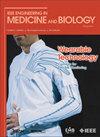Body composition assessment: theory into practice: introduction of multicompartment models.
IEEE Engineering in Medicine and Biology Magazine
Pub Date : 2010-01-01
DOI:10.1109/MEMB.2009.935471
引用次数: 35
Abstract
The science of body composition is based on a series of models characterized by progressive levels of anatomical complexity: atomic, molecular, cellular, functional tissue, and whole body. The physiological characterization of the different components included in each model is based on a range of specific methods that exploit basic notions of physiology, statistics, and physics. The theoretical principles need to be fully understood to explain the potential of each method in research and clinical practice.
身体成分评估:理论到实践:多室模型的介绍。
人体组成的科学是建立在一系列模型的基础上的,这些模型以解剖学复杂性的渐进水平为特征:原子、分子、细胞、功能组织和整个身体。每个模型中包含的不同组成部分的生理特征是基于一系列利用生理学、统计学和物理学基本概念的特定方法。需要充分理解理论原理,以解释每种方法在研究和临床实践中的潜力。
本文章由计算机程序翻译,如有差异,请以英文原文为准。
求助全文
约1分钟内获得全文
求助全文

 求助内容:
求助内容: 应助结果提醒方式:
应助结果提醒方式:


